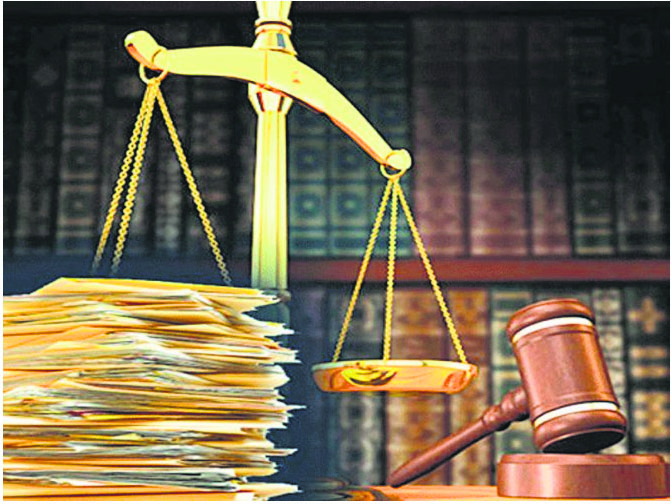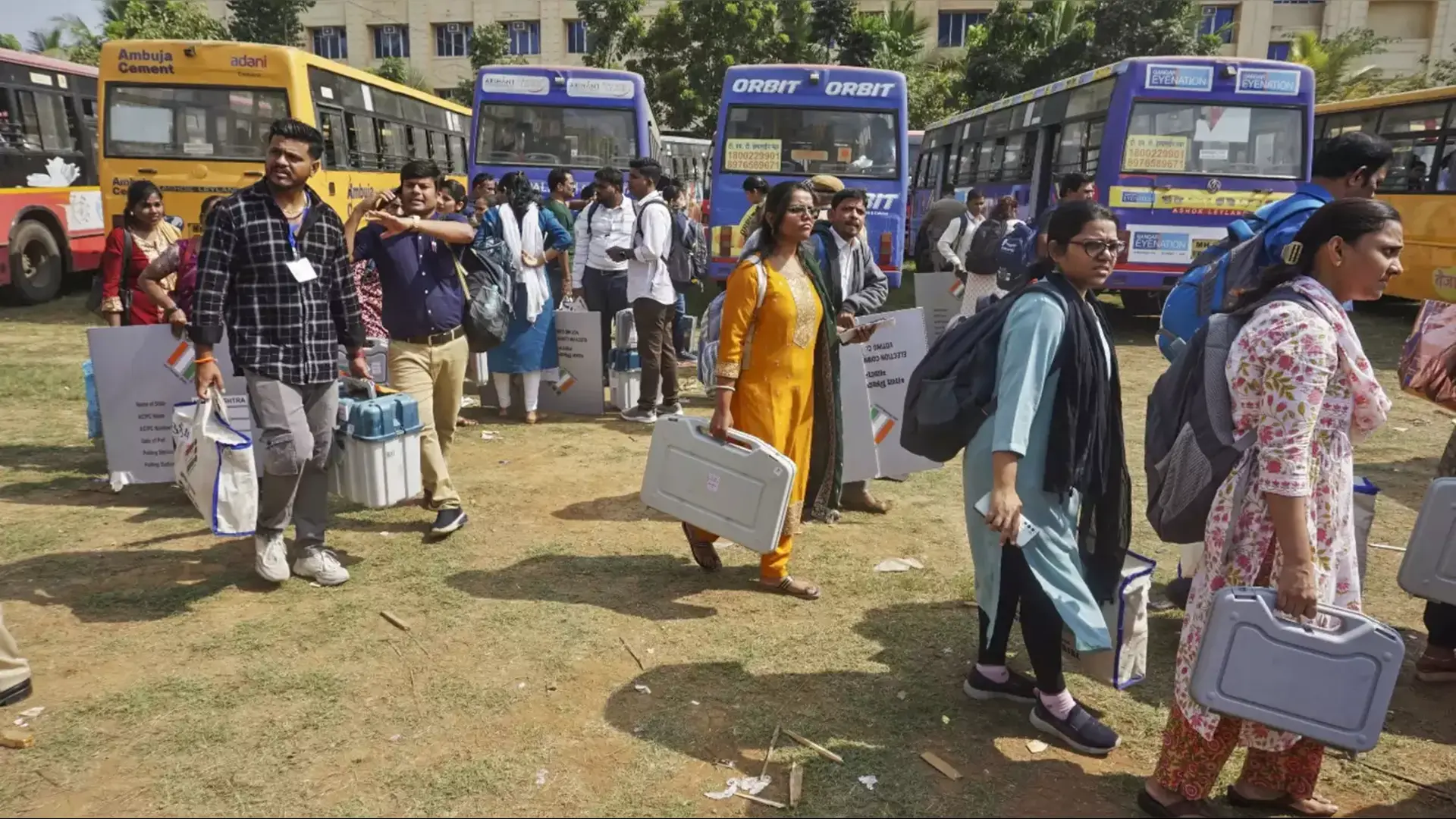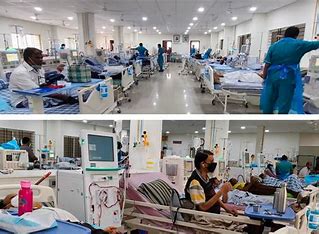
In 2019, the process of reforming the criminal justice system laws commenced, with the Home Ministry initiating this effort. Various stakeholders were invited to provide suggestions, including Governors, Chief Ministers, Lieutenant Governors/Administrators (September 2019), Chief Justice of India, Chief Justices of High Courts, Bar Councils, and Law Universities (January 2020), Members of Parliament (December 2021), and suggestions were also sought from all IPS officers by BPRD. A committee, chaired by the Vice Chancellor of National Law University, Delhi, was constituted in March 2020 to oversee this reform process.
A total of 3,200 suggestions were received from 18 States, 06 Union Territories, Supreme Court of India, 16 High Courts, 27 Judicial Academies – Law Universities, Parliament members, IPS officers, and police forces. The Honourable Home Minister conducted more than 150 meetings to thoroughly discuss these suggestions within the Home Ministry.
Now, it has been passed by both the Houses of the Parliament. And after the signature of the President, it will soon become a law.
The reform brings about significant changes in three key legislations – Bharatiya Nyaya Sanhita, Bharatiya Nagrik Suraksha Sanhita, and Bharatiya Sakshya Adhiniyam.
Bharatiya Nyaya Sanhita:
• It will consist of 358 sections (previously 511 sections of IPC).
• 20 new crimes have been incorporated.
• Imprisonment sentences have been increased in 33 crimes.
• The fine amount has been increased in 83 crimes.
• Mandatory minimum punishment has been introduced in 23 crimes.
• Community service penalties have been introduced in 6 crimes.
• 19 sections have been repealed.
• Introduction of a new chapter titled ‘Crimes against women and children’ to address sexual crimes.
• Specific provisions related to rape of women below 18 years of age and gang rape of a minor consistent with POCSO.
• New provisions on terrorism, organised crime, mob lynching, and witness protection.
• Victim-centric reforms with rights to participation, information, and compensation.
• Definition of terrorism for the first time
Bharatiya Nyaya Sanhita is set to replace the existing IPC (Indian Penal Code, 1860), featuring 358 sections compared to IPC’s 511. The reform prioritises Indian needs, giving precedence to crimes against women and children, murder, and offences against the nation.
The new legislation introduces a dedicated chapter, ‘Crimes against women and children,’ addressing sexual crimes. Amendments propose changes in rape provisions for women below 18, aligning gang rape penalties with POCSO. For girls under 18, life imprisonment or death penalty is suggested. The legislation also introduces targeted penalties for fraudulent sexual activities or false promises of marriage.
A milestone in the legislation is the definition and criminalisation of terrorism for the first time. Section 113 outlines acts endangering India’s unity, integrity, sovereignty, or economic security as punishable offences, with death penalty or life imprisonment without parole. The legislation covers offences such as destroying public or private property and causing widespread loss due to damage to critical infrastructure.
Organised crime is addressed with a new section defining illegal activities by syndicates, including armed rebellion, subversive activities, separatism, or threats to India’s sovereignty. Small organised crimes are criminalised, punishable by up to seven years, and economic offences are detailed, including currency tampering and embezzlement.
Crucial provisions include a new section on mob lynching, introducing life imprisonment or death penalty for crimes based on race, caste, or community. Severe penalties are proposed for injuries leading to near-disability or permanent disability.
Victim-centric reforms ensure the right to participation, information, and compensation. The concept of filing zero FIR is institutionalised, allowing FIR lodging anywhere regardless of the crime location. Victims are entitled to free FIR copies, progress updates within 90 days, and comprehensive information at various stages of the investigation and trial.
Notably, sedition is completely removed, and Section 152 of Bharatiya Nyaya Sanhita addresses activities encouraging separatism or threatening India’s sovereignty, emphasising intent and safeguarding freedom of expression. Words like hatred and contempt are replaced with ‘armed rebellion,’ ‘destructive activities,’ and ‘separatist activities.’
Bharatiya Nyaya Sanhita’s Section 152 specifies punishment, including life imprisonment or up to seven years, and a fine for acts inciting secession or armed rebellion, promoting secessionist feelings, or threatening India’s sovereignty and unity.
These legislative changes mark a significant step towards a more comprehensive, victim-centric, and modernised criminal justice system in India.
Bharatiya Sakshya Adhiniyam:
• It will have 170 provisions (instead of the original 167 provisions).
• A total of 24 provisions have been changed.
• 2 new provisions and 6 sub-provisions have been added.
• 6 provisions have been repealed/deleted.
• Expanded definition of documents to include electronic or digital records.
• Inclusion of electronic records in the definition of ‘document’ and ‘evidence.’
• Added standards for treating electronic and digital records as primary evidence.
• Legal admissibility, validity, and enforceability of electronic records as evidence.
Bharatiya Nagrik Suraksha Sanhita:
• It will have 531 sections (as opposed to 484 sections of CrPC).
• A total of 177 provisions have changed.
• 9 new sections and 39 new sub-sections have been added.
• 44 new provisions and clarifications have been incorporated.
• Timelines have been added to 35 sections.
• Audio-video provisions have been added at 35 places.
• 14 sections have been repealed.
• Prescribed timelines for various criminal proceedings, ensuring speedy justice.
• Introduction of e-FIR for prompt reporting of sensitive crimes.
• Information to complainants about the progress of the investigation within 90 days.
• Use of technology at all stages, from crime scene to trial, for transparency, accountability, and protection of rights.
• Digitization of case diary, FIR, charge sheet, and judgment.
• Use of technology for search and seizure operations.
• Mandatory videography of the entire process sent to the magistrate without delay.
• Summary trial for petty cases and less serious offences.
• Timelines for initiating prosecution against civil servants.
• Release on bail for first-time offenders having served one-third of the imprisonment.
2. Bharatiya Nagrik Suraksha Sanhita is poised to replace the current CrPC (Code of Criminal Procedure, 1973), boasting 531 sections compared to CrPC’s 484. The legislation undergoes substantial changes with 177 provisions modified, 9 new sections added, along with 39 new sub-sections and 44 new provisions and clarifications. Timelines are incorporated into 35 sections, and audio-video provisions are introduced at 35 locations, while 14 sections are repealed or removed.
The legislation establishes a stringent time frame for various stages of criminal proceedings, emphasising swift justice delivery. In Bharatiya Nagrik Suraksha Sanhita, the FIR must be recorded within three days via electronic communication, and the Medical Examiner is mandated to forward the victim’s sexual harassment examination report to the investigating officer within 7 days. Victims or informants are to be informed about the investigation’s status within 90 days.
Crucially, the legislation introduces a transformative approach to reporting crimes against women through e-FIR, facilitating prompt reporting of sensitive crimes. E-FIR is permitted for cognizable offences where the accused is unknown, offering victims a discreet platform to report crimes.
The police are now obligated to inform the complainant about the investigation’s progress within 90 days, deviating from conventional practice. To expedite trials and curb unfair adjournments, Section 392(1) prescribes a time limit of 45 days for concluding the trial. The legislation underscores the use of technology across all stages, ensuring transparency and accountability in police investigations, improving evidence quality, and protecting the rights of both victims and accused.
The modernisation effort includes digitizing case diaries, charge sheets, and judgments, maintaining registers with contact details in all police stations and courts, and mandatory audio-video recording during search and seizure operations. Forensic evidence collection by a Forensic Expert is made mandatory for crimes punishable with seven years or more, aiming for a 100% conviction rate. Forensic use is mandated in all States/Union Territories within five years.
Initiatives focus on establishing the National Forensic Science University (NFSU) with seven campuses and two Training Academies. The State-of-the-art DNA analysis facility is inaugurated in Chandigarh. Technology is integrated into search and seizure operations, utilising videography through electronic devices and ensuring prompt submission to the magistrate.
Police accountability is reinforced by displaying information about arrested persons, and the state government nominating a police officer for arrest-related responsibilities. Simplification measures include expediting petty cases through summary trials and making summary trials mandatory for less serious offences. The legislation sets a 120-day timeline for deciding on prosecution against civil servants.
Under trial prisoners, if first-time offenders, will be released on bail after serving one-third of the imprisonment. The Jail Superintendent must apply to the court if the undertrial prisoner completes half or one-third of the term. The legislation introduces a New Witness Protection Scheme, requiring state governments to prepare and notify an Evidence Protection Scheme. Confiscation of property of declared criminals is enhanced, allowing attachment and confiscation of assets outside India in cases of declared criminals, now expanded to cover 120 crimes, including rape, not previously included. Provisions for speedy disposal of case properties, utilising photographs or videography as evidence, are outlined within 30 days.
These amendments signify a concerted effort to establish a modern, technologically advanced, and victim-centric criminal justice system in India.
Bharatiya Sakshya Adhiniyam
3. Bharatiya Sakshya Adhiniyam (Evidence Act, 1872) is set to undergo revisions with 170 provisions, a slight increase from the original 167 provisions. The modifications include changes to 24 provisions, the addition of 2 new provisions and 6 sub-provisions, and the repeal or deletion of 6 provisions. Significant amendments in the Bharatiya Sakshya Adhiniyam, 2023 involve the broadening of the document definition. The revised legislation now explicitly encompasses electronic or digital records, such as emails, server logs, computer documents, messages, websites, and locational evidence from smartphones or laptops. Electronic records are formally incorporated into the ‘document’ definition, and statements obtained electronically fall under the purview of ‘evidence.’ To further strengthen the treatment of electronic and digital records as primary evidence, additional standards have been introduced. These standards emphasize the proper custody, storage, transmission, and broadcast of such records. The revised legislation expands the scope of secondary evidence to include oral and written confessions, along with evidence from a skilled person examining documents that the court finds challenging to assess.
One of the key advancements is the establishment of the legal admissibility, validity, and enforceability of electronic or digital records as evidence, affirming their standing within the legal framework. These amendments represent a forward-looking approach, acknowledging the evolving nature of evidence in the digital age while ensuring the integrity of legal processes.















